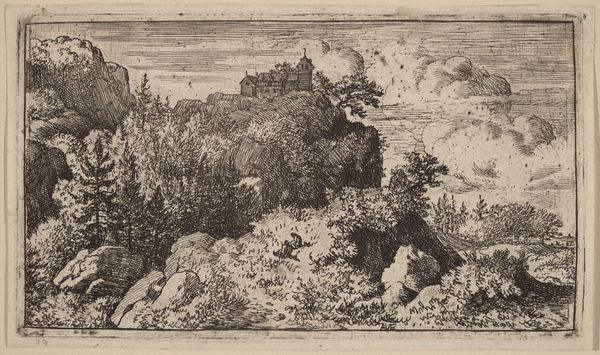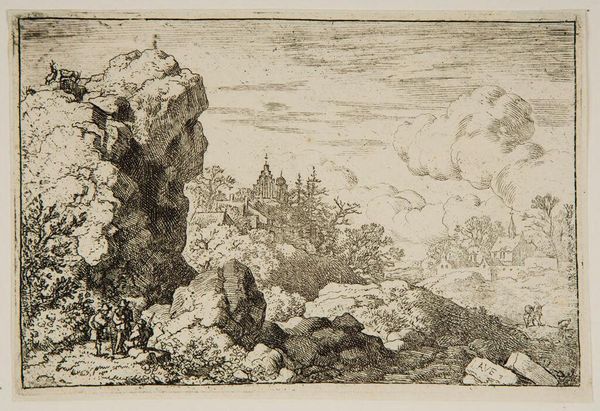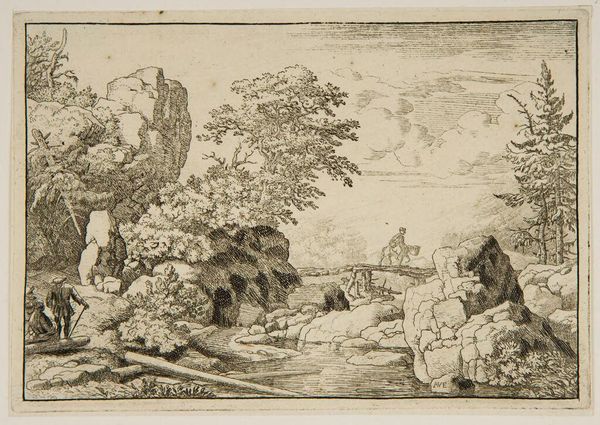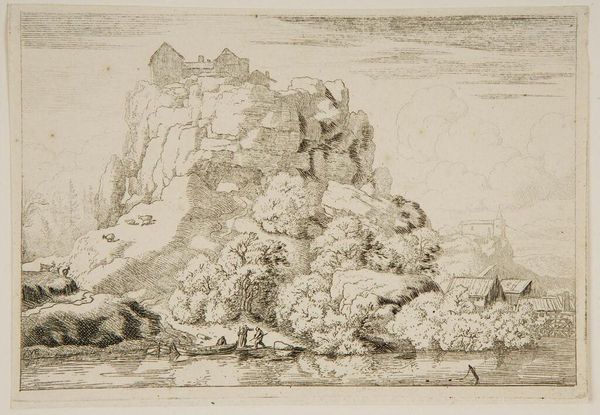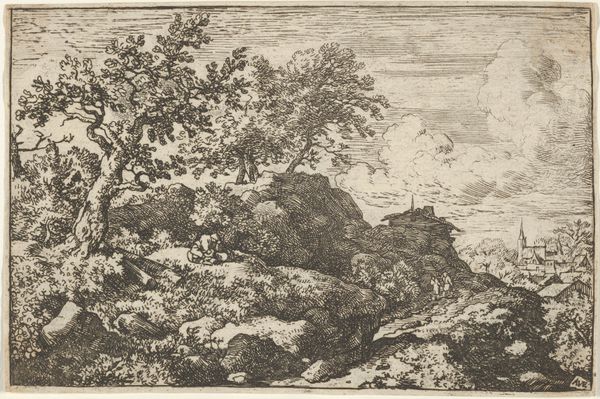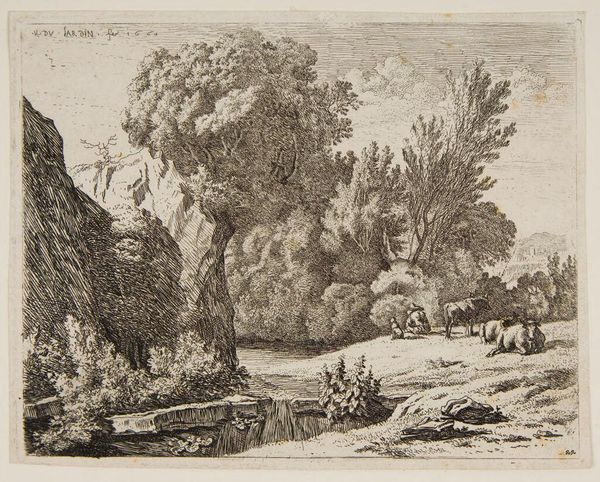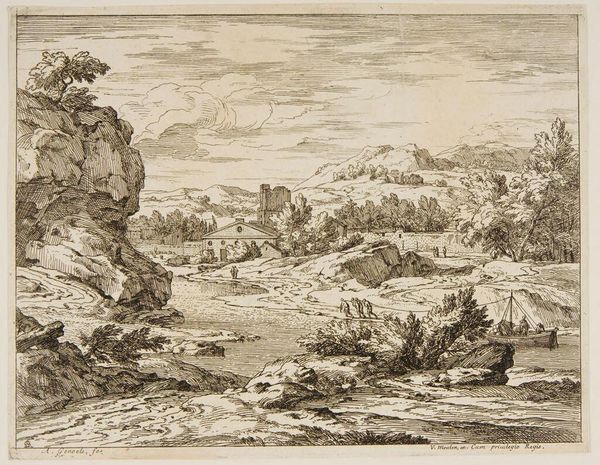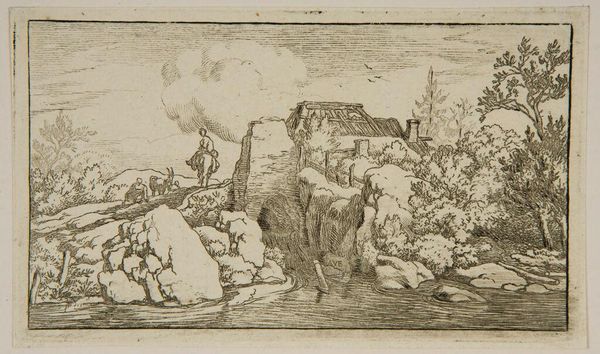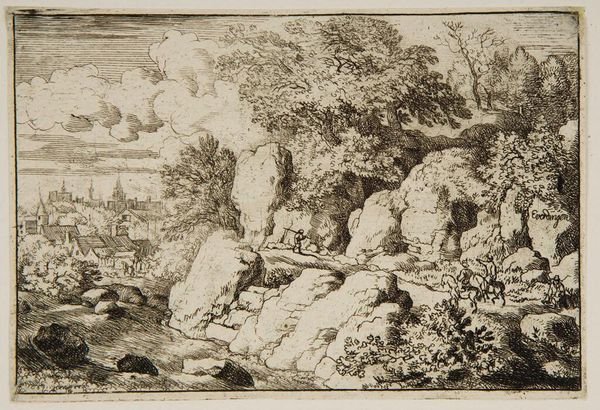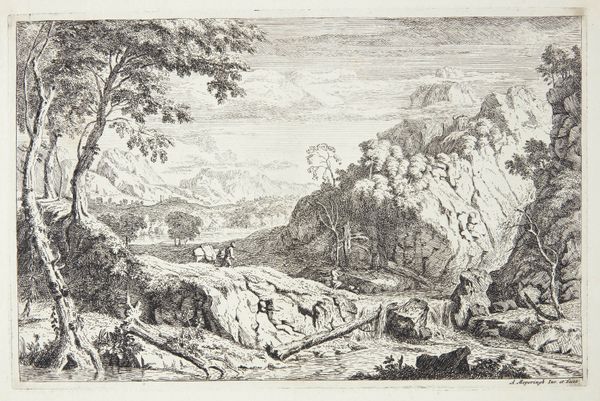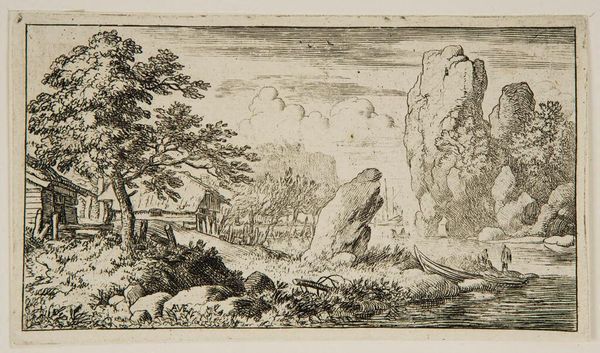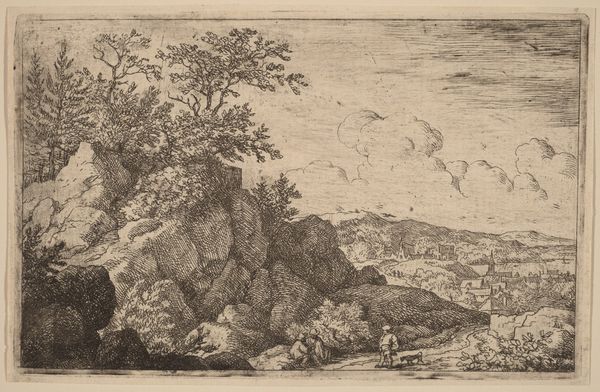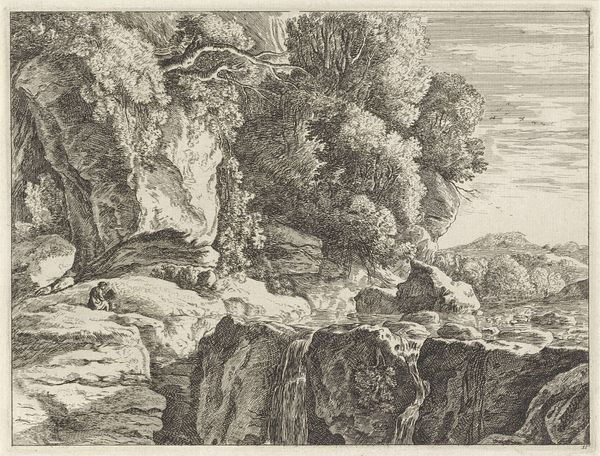
Copyright: CC0 1.0
Curator: Allart van Everdingen's "Pines in a Ravine" presents an idealized landscape, a vision of nature imbued with symbolic weight. The trees, rocks, and implied narrative invite us to consider our relationship to the natural world, particularly through a lens of 17th-century Dutch sensibilities. Editor: The stark lines and dense crosshatching give it an almost foreboding feel, doesn't it? I'm drawn to the texture he coaxes from what I assume are basic etching tools. The building perched on top, though, seems disconnected. Curator: In its time, this etching would have been part of a broader discourse about the relationship between humanity and the environment, framed by nascent scientific inquiry and lingering religious beliefs. The castle represents power, both secular and spiritual, dominating nature. Editor: Right, and the process itself is a way of imposing control; the labor needed to create the image, the acid, the mark-making all point to an active modification of materials. Was Everdingen considering the exploitation of natural resources, or celebrating human ingenuity? Curator: Perhaps both. The etching captures the tension between dominion and harmony, a dilemma still relevant today. Editor: Indeed. Looking at it, I'm struck by how this speaks to our ongoing struggle to define ourselves within the ecosystems we inhabit. Curator: It is interesting how this small etching holds so many ideas. Editor: And so much skilled craft.
Comments
No comments
Be the first to comment and join the conversation on the ultimate creative platform.
